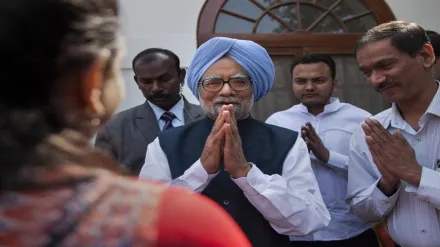By Arvind Mayaram
Dr Manmohan Singh will be remembered not kindly but with gratitude by history. In July 2012, I was appointed as secretary in the Department of Economic Affairs by the Government. Prime minister Singh was also holding the charge of the finance ministry that time after Pranab Mukherjee had been elected India’s President.
However by the time I joined as secretary, P. Chidambaram was the finance minister and I did not get to directly work under Manmohan Singh. But during the 2012-14 period, the Indian economy was in the throes of multiple crises and we had to regularly present our strategies before the PM. I was fortunate enough to watch him closely as he guided the government quietly but steadily.
A man a few words, Dr Singh was a great listener. He was a globally recognised economist and architect of India’s economic reforms of 1990s, but he never cut any of us short when we were making a presentation. Even if our opinions were contrarian to his point of view, he contradicted us gently, often with a smile. He was clear and precise in his directions, but always delivered them as a suggestion.
Even though we struggled with issues like runaway inflation, burgeoning fiscal deficit and toxic current account deficit against serious odds, he provided much needed encouragement and support.
When in mid 2013, the Rupee tanked from 59 to a dollar to 68.8, there was a near panic. When nothing was working we suggested that to correct market sentiments a new “NRI Bond” should be floated along with a few other measures. There was a serious pushback from the RBI. Most economists within the government were also opposed to it. As FM Chidambaram put his faith in our suggestion, we briefed Dr Singh, who concurred and subsequently, the RBI launched the scheme. The rest is history. Within a quarter, we could bring in around US$ 35 billion, reversing the flow of dollars from the country and pulling the Rupee back to around 60 to a dollar.
From growth strategies to FDI reforms, Dr Singh was always supportive. The list of reforms that he presided over is very long and impressive. Very few would remember that GDP growth, which averaged 7.7% during Dr Singh’s 10 year stewardship of the government was unprecedented. When it slumped to 5.1% in 2012-13, the finance ministry under FM Chidambaram took some extraordinary measures.
Within an year, the economy had turned around. The economy recorded a growth rate of 6.9% in 2013-14 providing the then new government a solid foundation for consolidating and accelerating growth. There was not a single strategy followed by us during that period which did not benefit from Dr Singh’s oversight.
Dr Singh is remembered as the architect of economic reforms of 1991, which created a higher growth trajectory for the economy. But we must not forget the second economic revolution ushered in by him during his ten year rule, which was of an even greater magnitude. UNDP and Oxford Poverty and Human Development Initiative (OPHI) released the Global Multidimensional Poverty and Human Development Index in 2018. According to the report, the incidence of multidimensional poverty almost halved between 2005-06 and 2015-16 (most of this period under Dr Singh’s rule), from 54.7% of the population to 27.5% of the population.
Sabina Alkire of OPHI, who led the study, said: “India remains the country that has the largest reduction in the number of poor, with over 270 million persons leaving poverty.” In fact, getting such a large number of people out of poverty in such a short time created a huge demand side push and consequently a crisis of expectations which the government could not contain, and collapsed under its weight in the 2014 elections.
On a personal note, I remember two one to one meetings the most. The first was aboard the PM’s special plane which was carrying him and the Indian delegation to St. Petersburg to participate in the G20 Summit in 2013. PM Singh called me aside for a briefing on the issues that we were to raise and then spoke over a range of issues afflicting the economy, in the larger global context.
I learnt a lot from his overarching framework of understanding of geo-politics and India’s position in it in terms of its economic prowess. The second meeting was soon after I had retired from service in October 2015. I wanted to express my gratitude for the trust he had placed in me during a very critical period by appointing me as the finance secretary. Dr Sigh received me with great affection and talked to me about my career and how I felt about being in the IAS at the end of a long service period. As I rose to leave, he gently put his hand on mine and said, “I have watched you from a distance during these last few years and I have no hesitation in saying that you have discharged yourself with distinction.” I couldn’t have asked for a greater affirmation from what I received from this great statesman on that day.
The author is former finance secretary.
Disclaimer: Views expressed are personal and do not reflect the official position or policy of FinancialExpress.com. Reproducing this content without permission is prohibited.
